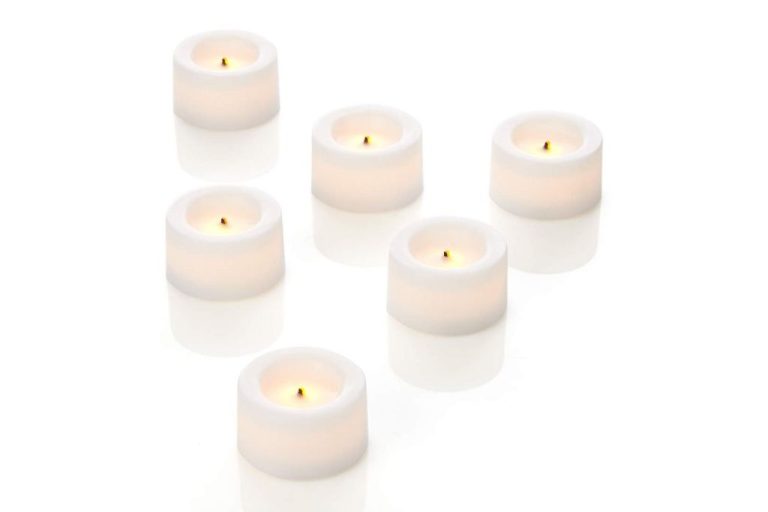Do Clay Pot Candle Heaters Work?
What Are Clay Pot Candle Heaters?
Clay pot candle heaters, also known as terra cotta pot heaters, are a type of radiant space heater that uses candles as a heat source. They consist of a terra cotta clay pot, a candle, and sometimes a base or platform to elevate the pot.
The basic design is simple – one or more candles are placed inside the opening of an unglazed terra cotta flower pot or other similar clay pot. As the candles burn, the clay absorbs the heat from the flame and radiates it out steadily into the surrounding space. The clay holds the warmth and releases it slowly over time, providing gentle radiant warmth to the area around the pot heater.
Unlike other types of space heaters, clay pot candle heaters do not use any electricity or have exposed flames. They are powered entirely by candles, making them a unique option for off-grid or emergency heating situations when power may be out.
History and Origins
The use of clay as a heating element dates back thousands of years to ancient cultures all over the world. Clay pots filled with embers were used for warmth and cooking in many early civilizations.
In Asia, ceramic Kang bed warmers filled with coals were used in China, Korea and Japan for centuries. These allowed people to warm their bedding and keep their feet toasty during cold winters.
In Europe, bed warming pans made of metal or ceramic were filled with hot coals and slid between the sheets to take the chill off on cold nights. These originated in the 16th century and were popular into Victorian times.
In Africa and the Middle East, clay fire pots called kottan were traditionally placed under the coverlets to quickly warm the bed before sleeping. These distinctive conical clay pots with handles date back thousands of years.
The basic design of these early warming devices – a heatproof vessel filled with hot coals from the hearth – laid the foundation for the development of modern clay pot candle heaters.
Claimed Benefits
Clay pot candle heaters are touted to provide both heating and aromatherapy benefits. Here’s a look at the claimed benefits:
Heating Capabilities
One of the main appeals of clay pot candle heaters is their purported ability to provide gentle, radiant heat. Some manufacturers and DIY sources claim these units can heat small spaces like bathrooms, bedrooms, and offices quite effectively. The terracotta clay material absorbs the heat from the candle flame and releases it gradually into the surrounding environment. Proponents say the radiant heat feels more natural and comforting than forced air heating.
Aromatherapy Benefits
Clay pot candle heaters allow you to add scented candles, which are said to provide aromatherapy benefits. The scent from the candle fills the nearby space, helping to create a relaxing or uplifting atmosphere depending on the chosen fragrance. People who enjoy aromatherapy claim it can improve mood, reduce stress and anxiety, boost energy, and even promote better sleep.
How They Work
Clay pot candle heaters work through the process of convection, which is the motion of heat transfer. When a candle is lit inside the clay pot, the flame heats up the air at the bottom of the pot. As this air becomes warmer, it becomes less dense than the cooler air above it and rises. The cooler air then sinks to the bottom, gets heated up, and continues the cycle.
This creates a continuous loop of air currents that distribute heat from the candle throughout the room. The terracotta clay helps absorb and radiate the heat more efficiently than other materials. The unglazed clay is porous and permeable to air, which improves circulation.
Some key factors that impact the heating efficiency include:
- The size and shape of the pot – larger pots with more surface area tend to distribute heat better.
- The number and size of the candles – more candles or larger candles produce more heat.
- The climate and insulation of the room – heaters work best in well-insulated spaces.
- Placement and air flow – heaters work best suspended in mid-air so maximum air circulation occurs.
By understanding the convection process and optimizing these factors, clay pot candle heaters can effectively heat small, contained spaces through this natural circulation of heat.
Testing the Heating Efficiency
Independent tests have been conducted to determine the heating power of clay pot candle heaters. In one study, researchers tested a popular terra cotta pot heater in a controlled setting. They found that it raised the ambient room temperature by between 2-6°F when used continuously over a 6 hour period. However, the amount of heating diminished as the candle burnt lower in the pot.
In comparison, a 1500W electric space heater was able to raise the room temperature by 25°F in the same time period. The clay pot was able to provide supplemental heating, but could not compare to the heating power of an electric or gas space heater. Researchers concluded that the clay pot works best in smaller spaces like offices or bathrooms where you need a heat boost, not as a sole heating source for an entire room.
Additional independent tests have confirmed these findings. While charming, clay pot candle heaters provide only modest, localized heating at best. Their clay construction does absorb and radiate heat, but cannot compete with the heating power of heaters designed specifically to warm rooms efficiently. If used properly and with realistic expectations, they can provide a bit of extra warmth.
Safety Considerations
Clay pot candle heaters do come with some safety concerns that need to be properly addressed. The biggest risk is fire. Having an open flame for prolonged periods raises the fire hazard in your home. It’s critical to take precautions and never leave a clay pot heater unattended.
The clay pot and candle should be placed on a sturdy, fireproof surface. Keep it away from anything flammable like curtains, furniture, or décor. There should be at least a 3 foot radius cleared around the clay pot heater. You don’t want the flames spreading if the pot were to crack or the candle were to tip over.
Proper supervision is a must anytime the candle heater is operating. Make sure to blow out the candle before leaving the room or going to sleep. Some even recommend keeping a fire extinguisher handy just in case, and operating the heater in sight of a smoke detector.
While taking proper precautions can minimize the risks, clay pot candle heaters do require diligent monitoring to use safely in your home.
Pros and Cons
Clay pot candle heaters seem to offer some benefits over regular candles or other small heat sources:
Benefits
- The enclosed design helps concentrate and radiate heat more efficiently than an open flame.
- Using a terra cotta pot and candle is generally cheaper than running an electric space heater.
- They provide a nice glow of light in addition to heat.
- As a small, portable heat source, they can be moved around easily to heat a desk or other small area.
- The simplicity of the design – just a pot, candle, and tripod or platform – appeals to many people.
Downsides
- The amount of heat produced is relatively minimal and may not make a significant difference in heating a larger room.
- There are safety concerns with having an open flame that requires monitoring.
- The candle and pot can get extremely hot to the touch.
- It requires purchasing candles on a regular basis which can get costly over time.
- The heat is concentrated close to the pot, so areas further away may not feel much effect.
Cost Analysis
When it comes to price, clay pot candle heaters are generally quite affordable compared to other space heaters on the market. You can often find basic terra cotta pot kits for under $20 at craft and home goods stores. More elaborate ceramic heaters may cost $40-60 or more.
The main ongoing cost with clay pot heaters is buying replacement candles. You’ll need to use special heat-resistant candles, like tea lights or votives, which can cost $1-2 per candle. If your heater uses 3-4 candles at a time, and each candle burns for 5-6 hours, you could easily go through a pack of 10-12 candles per week during cold weather. This adds up to $10-20 per month in candle costs.
In contrast, an electric space heater may cost more upfront at $40-80, but then has minimal operating costs. So clay pot heaters are cheap to buy but have continuous costs, while electric heaters cost more initially but are cheaper to run long-term.
Alternatives to Consider
There are other options besides clay pot candle heaters that can provide supplemental heating and ambiance. Here are some alternatives worth looking into:
Other Candle Heaters
– Terra cotta disc heaters – These work similarly to clay pots, but use a terra cotta disc with a tealight candle underneath to radiate heat. The discs come in various shapes/sizes.
– Glass jar heaters – Glass containers like mason jars can be used as a candle heater. The glass helps radiate and distribute the candle’s heat.
– Decorative candle heaters – Companies like Wittus offer handmade stoves with space for a tea light. These act as heaters while providing decor.
Electric Heating Options
– Portable heaters – Small electric convection or radiant heaters can provide targeted heating for desktops or other small spaces.
– Heated blankets – An electric blanket can provide personal warmth without having to heat an entire room. Many have adjustable settings.
– Heating pads – Much like blankets, these can provide direct warmth where needed.
The Bottom Line
After reviewing the history, claimed benefits, working mechanism, heating efficiency tests, safety considerations, pros and cons, and costs of clay pot candle heaters, what’s the final verdict on whether these devices work effectively for home heating?
The key takeaways are:
- Clay pot heaters have been used for centuries in various cultures as a simple way to transfer heat from a candle flame into a room.
- They are claimed to provide supplemental spot heating and aromatherapy benefits from infused candles or essential oils.
- Testing shows they do transfer some heat into a room via convection, but only in very limited, close proximity to the device.
- Safety is a concern if left unattended with an open flame, and indoor air pollution is another consideration.
- As a decor piece, they can provide some extra heat and nice scents when used properly. But as a true room heating solution, they do not effectively heat larger spaces.
- Lower cost alternatives like space heaters or electric blankets provide more heating power at similar or lower costs.
Overall, clay pot candle heaters do function to emit a small amount of heat into a room via careful candle warming and convective air currents. However, they are not an efficient or high-capacity solution for actually heating a larger room or home. Their benefits are limited to temporary, localized spot heating and ambient aromatherapy at best. Claims of effectively heating large, open indoor spaces are exaggerated and not borne out by scientific testing. If used safely and with the proper expectations, clay pot heaters can provide a nice decorative accent with supplemental heat or scent effects in very limited proximity. But other electric heating products offer more powerful and cost-effective room heating capabilities.


